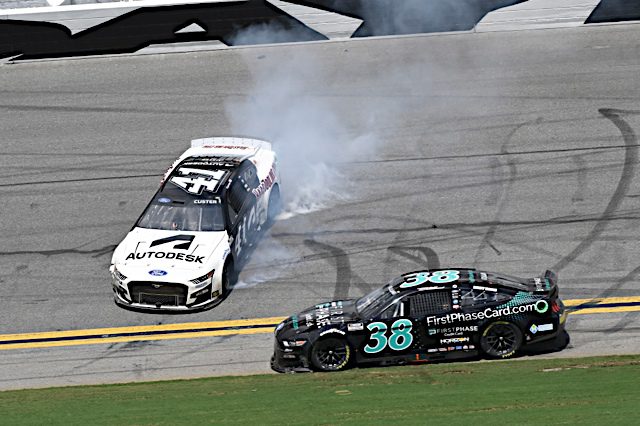NASCAR’s summer return to Daytona International Speedway started with plenty of anticipation. The regular season finale was supposed to be a celebration, the peak of a year filled with parity and playoff drama surrounding the Next Gen car.
Instead, the sport leaves Daytona with more questions than answers, a weekend that led to serious concerns about officiating, safety and whether this track is the right spot to hold the postseason finale.
Mother Nature, more than anyone, took center stage right from the start; both the NASCAR Xfinity and Cup series races suffered through hours’ worth of rain delays. Sadly, once the races began, both teams and drivers were saddled with perhaps the most destructive race weekend on record.
All in all, 36 of the 75 cars crashed out of this weekend’s two events. Roughly about 10 of them were left in one piece, avoiding wrecks or suffering minimal damage.
Cost-saving measures have been important for teams in NASCAR this season, yet 650-plus miles at Daytona collectively destroyed millions of dollars of equipment in less than 48 hours. And with Atlanta Motor Speedway being reconfigured to serve as a de facto superspeedway, the teams have to face this gauntlet six times every year. Is it really worth it?
For the Xfinity race, the first 70 laps were clean, with just one car out of the event. But as the pressure ratcheted up, the final 48 laps turned into a glorified demolition derby. A total of 19 of the 38 cars crashed out of the race, and just about everyone else was crippled from damage. After 118 laps, all but five cars were involved in an incident at some point throughout the night.
Now, look: Accidents are a part of racing. To hope for a crash-free race anywhere — let alone at Daytona — is foolish. Drivers are pushing their cars to the absolute limit, and they are only human. Mistakes will be made.
But in recent years, it has become almost an expectation for multiple Big Ones in the closing laps of superspeedway races. And when drivers can’t go one lap without crashing on multiple overtime restarts, what message does it send?
The carnage wasn’t always this bad. Yes, the Big One is not a recent occurrence. The term was coined in the early 2000s, and NASCAR has had its share of large accidents back in the 20th century, including the scary Bobby Allison wreck at Talladega that spawned modern pack racing back in 1987.
But what’s different now compared to even 10 years ago is the majority of Big Ones…
Click Here to Read the Full Original Article at Frontstretch…

